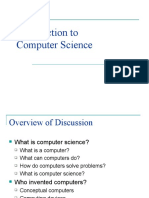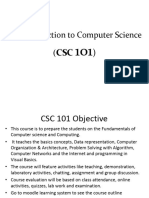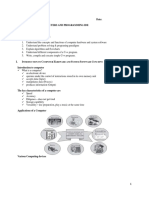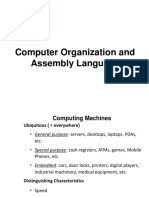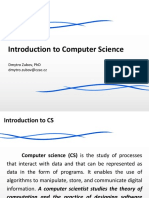0% found this document useful (0 votes)
45 views35 pagesIntroduction To Informatics
This document provides an introduction to the subject of computer science. It discusses what a computer system is, what computers can do, and how computers solve problems. It also defines what computer science is and describes some basic concepts like numerical systems, Boolean algebra, algorithms, hardware, and software.
Uploaded by
Redi MemaCopyright
© © All Rights Reserved
We take content rights seriously. If you suspect this is your content, claim it here.
Available Formats
Download as PPTX, PDF, TXT or read online on Scribd
0% found this document useful (0 votes)
45 views35 pagesIntroduction To Informatics
This document provides an introduction to the subject of computer science. It discusses what a computer system is, what computers can do, and how computers solve problems. It also defines what computer science is and describes some basic concepts like numerical systems, Boolean algebra, algorithms, hardware, and software.
Uploaded by
Redi MemaCopyright
© © All Rights Reserved
We take content rights seriously. If you suspect this is your content, claim it here.
Available Formats
Download as PPTX, PDF, TXT or read online on Scribd
/ 35

